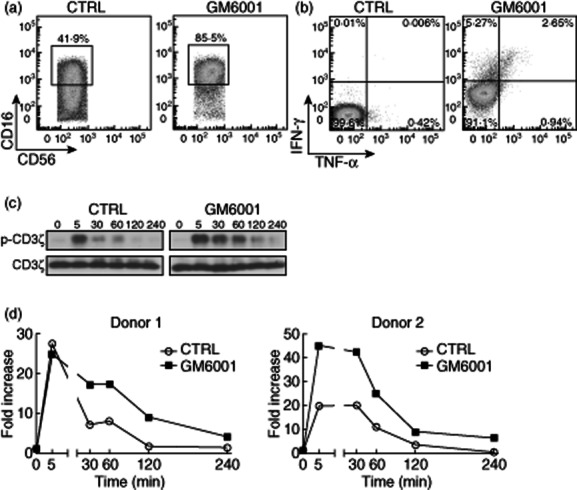Figure 3.

Cross-linking of CD16 in the presence of matrix metalloproteinases (MMPs) inhibition led to increased and sustained CD16 mediated signalling through phosphorylation of CD3ζ. (a) Freshly isolated natural killer (NK) cells were incubated with mouse anti-human CD16 (clone 3G8) at 20 μg/ml for 30 min on ice, washed with phosphate-buffered saline (PBS) to remove unbound antibodies and then followed by 4 h incubation at 37°C with goat anti-mouse secondary immunoglobulin (IgG) at 20 μg/ml in the presence of the MMPs inhibitor GM6001 or its control (CTRL). Then, flow cytometric analyses were performed. Cells were gated electronically on CD3−CD56dim NK cells and representative dot-plots of the CD16 expression from two experiments is shown with NK cells from two donors. (b) Cells were treated as in (a). Representative dot-plots of interferon (IFN)-γ- and tumour necrosis factor (TNF)-α-producing NK cells from two experiments are shown with NK cells from two donors. (c) Cells were stimulated as in (a) and (b), and harvested at different time-points (0, 5, 30, 60, 120 and 240 min) and lysed. Total cell lysates were resolved on 4–20% Mini-protean® precast gels, transferred to a polyvinylidene difluoride (PVDF) membrane, followed by immunoblotting with appropriate antibodies. A representative image of Western blot is shown. (d) Graph representations of the quantification of phospho-CD3ζ from two independent experiments with NK cells from two donors are shown. Data were analysed using ImageJ software and normalized according to total CD3ζ.
